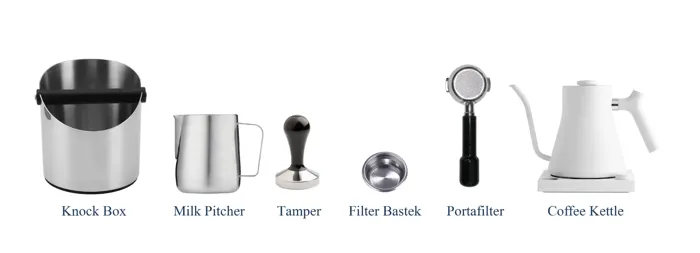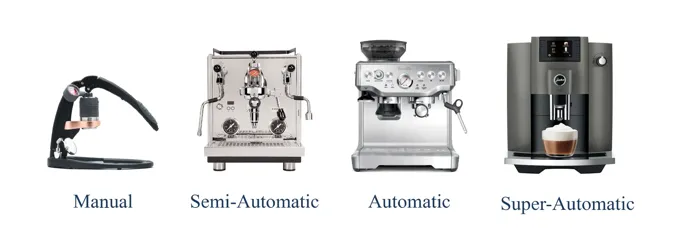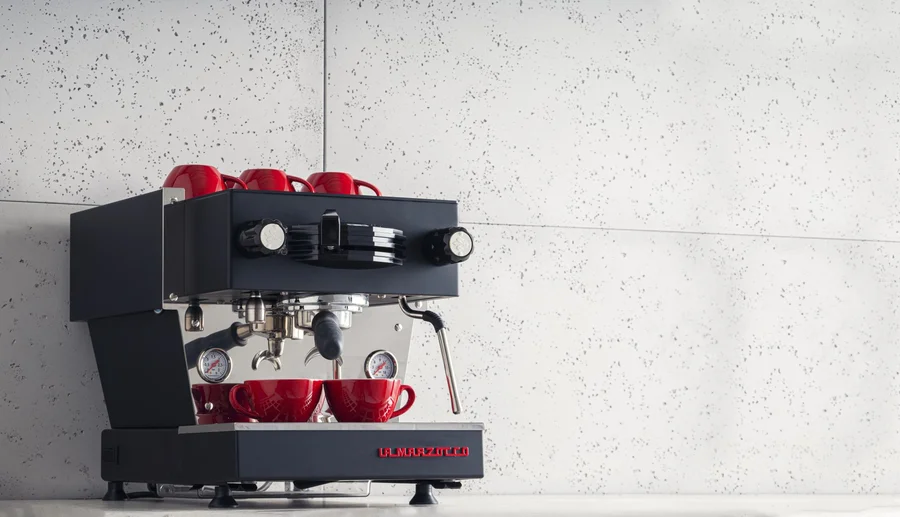Top Espresso Machines Brands Based In china Brands
Here's what we recommend for:
Affordability
3/5
Priced at $1,799, for the starting bundle, the Meraki Espresso Machine is somewhat high-end and falls into the upper middle-range. While it offers top-tier features, the cost may not be suitable for all budgets.
Build Quality & Durability
3.9/5
Constructed with high-quality stainless steel and ABS plastic casing, the Meraki balances durability with a lightweight design and aesthetic appeal. Despite its lightweight feel, the materials used are designed to withstand regular use, offering long-lasting performance. However, since Meraki is a relatively new brand and their product was recently launched, there is limited data for long-term user experience to fully assess its durability over time.
Range of Machines
1/5
Meraki currently offers a single model, the Meraki Espresso Machine. While this model is comprehensive and caters to various brewing needs, the brand is still young and fresh, focusing on developing and perfecting their first offering. As a newer company, Meraki is in the process of building its portfolio, and in the future, we may see more machines or variations that cater to different preferences and needs in the coffee...
Design & Appearance
4.7/5
The Meraki Espresso Machine features a sleek, modern design with a matte exterior and metallic accents. This thoughtful design that enhances the coffee-making experience comes in black and white colours. Its cylindrical structure, separating the grinder, brew group, and steam system, not only enhances aesthetics but also optimizes workflow.

NFC CoffeeSense™ Technology: Auto-grind and extraction by scanning coffee bag

Integrated Grinder: Collaborative design with Timemore®

Commercial-Grade Rotary Pump: Stable 9-bar pressure

Magnetic Dosing Cup: Ensuring mess-free operation

Limited Model Range: Currently offers only one model

New Brand with Limited Track Record: No long-term data or user experiences

Premium Price: A significant investment for some users.
Everything You Need to Know
About Home Espresso Machines
Love that first sip of espresso in the morning? Why not bring the café experience to your kitchen? A good home espresso machine can turn your home into your personal barista station, and we’re here to help you find the perfect one! This guide breaks down everything you need to know about home espresso machines—from how they work to the key features you should keep in mind when picking your new coffee companion. Get ready, we’ve got tips to help you make the perfect espresso right at home.
How Espresso Machines Work
An espresso machine is designed to brew coffee by forcing pressurized water through finely-ground coffee beans. The process results in a concentrated shot of coffee, known as espresso.
Here’s a quick overview of the key components involved in the brewing process:
Portafilter: The handle and basket where the coffee grounds are placed.
Boiler: Heats the water to the ideal brewing temperature.
Pump: Creates the pressure required to force hot water through the coffee grounds.
Group Head: Where the portafilter attaches to the machine, directing the pressurized water through the coffee grounds.
By controlling these components, espresso machines ensure a perfect cup of espresso.

Types of Espresso Machines
There are four main types of espresso machine, each offering different levels of control, automation, and price. Here's a breakdown:
Manual Espresso Machines
As the most traditional type of machine, manual espresso machines are not the focus of our discussion. They use a lever to apply pressure, which the user must operate by hand, and they don’t consume electricity.
Semi-Automatic Espresso Machines
Similar to the machines commonly found in cafés, they offer a balance between control and convenience. The user is responsible for grinding, tamping, and adding coffee to the portafilter, while the machine automatically handles temperature, pressure, water flow, and the brewing process. These machines allow you to customize your espresso experience.
Automatic Espresso Machines
With automatic machines, you need to prepare the portafilter and press a few buttons. The machine handles the tamping, brewing, timing, and sometimes even the milk frothing.
Super-Automatic Espresso Machines
Super-automatics are the most advanced. You only need to press a button. They grind the beans, tamp, brew, froth milk, and even clean themselves. It gives you the most comfort but no customization or control.

Key Features to Look For
When shopping for an espresso machine, there are several important features to consider to ensure you’re getting the best machine for your needs:
Pressure and Pump Systems
Espresso requires a consistent pressure of around 9 bars to extract the perfect shot. Look for machines with a high quality pump to ensure reliable performance.
Temperature Control
Consistent water temperature is key to brewing espresso. Most machines maintain a steady temperature around 200°F. Machines with PID (Proportional-Integral-Derivative) controllers offer more precise control over temperature.
Steam Wand and Frothing Milk
If you enjoy lattes or cappuccinos, a steam wand is essential. It allows you to froth milk to the perfect texture for your favorite drinks. Some machines offer automatic milk frothing features for added convenience.
Grinder and Grind Settings
A built-in grinder provides fresh coffee grounds every time you brew, but it’s important to look for machines with adjustable grind settings to suit different coffee beans and personal preferences.
Drip Tray, Portafilter Size, and Build Quality
A durable build is essential for longevity. Look for machines with stronger materials like stainless steel for better durability. A larger drip tray and portafilter size are also important for larger cups or mugs.
Frequently Asked Questions (FAQs)
What is a hybrid espresso machine?
Hybrid espresso machines offer both manual control and automation, giving users the flexibility to take charge of certain aspects of the brewing process while also offering automated features when you need just convenience.
What’s the difference between milk frothing systems?
Manual Frothing: This system requires the user’s full control and attention, as it works with a steam wand. It needs a learning curve and some skill, but gives the best froth and foam texture.
Semi-Automatic Frothing: These systems allow you to choose the amount of the milk, temperature and foam level but automatically perform the operation and froth the milk. They give you a bit more control over the final result.
Fully Automatic Frothing: Just fill up the milk container! These systems fully automate the frothing process based on the beverage type and pre-programmed functions. It doesn’t offer much customization but ensures consistency and ease of use.
What is a bean-to-cup machine?
Bean-to-cup machines aren't a separate category, but rather a feature that can be found in some automatic espresso machines. These machines are equipped with a built-in grinder that grinds the beans, then automatically transfers the ground coffee to the portafilter and starts the brewing process.
How often should I clean my espresso machine?
Regularly cleaning your espresso machine is essential for maintaining its performance.
Cleaning the group head, rinsing the portafilter or wiping the steam wand is necessary after each use. However deep cleaning, such as descaling or backflushing, should be done every few months or according to your machine's manual.
Do I need to use filtered water for my espresso machine?
We strongly recommend using filtered or bottled water in your espresso machine. It improves the flavor of your espresso while also preventing mineral buildup inside the machine and keeps your machine in good condition. Hard water can lead to scaling, which can reduce your machine’s efficiency and lifespan.
How do I know when it’s time for a deep cleaning of my espresso machine?
For deep cleanings, such as descaling or backflushing, most machines have a reminder or indicator light that alerts you when it's time. Typically, this should be done every 2-3 months, depending on water hardness and usage frequency, though you can also follow the guidelines in the machine's manual.
What is PID control in espresso machines?
PID (Proportional-Integral-Derivative) control is a system that precisely manages the temperature, and ensures water remians consistently stable.
If the temperature drops below the ideal level, the PID system prevents brewing operation, and activates the heating elements until the water reaches the optimal range.
Sometimes delays the brewing but this helps prevent poor extraction.

Can I use capsules in espresso machines?
In some espresso machines, commonly known as all-in-one machines, using capsules is an option, but most machines do not support this, as they operate on different systems. For more details on capsule-based machines, check out our Single-Serve Espresso Machines page.
KEEP READING



















